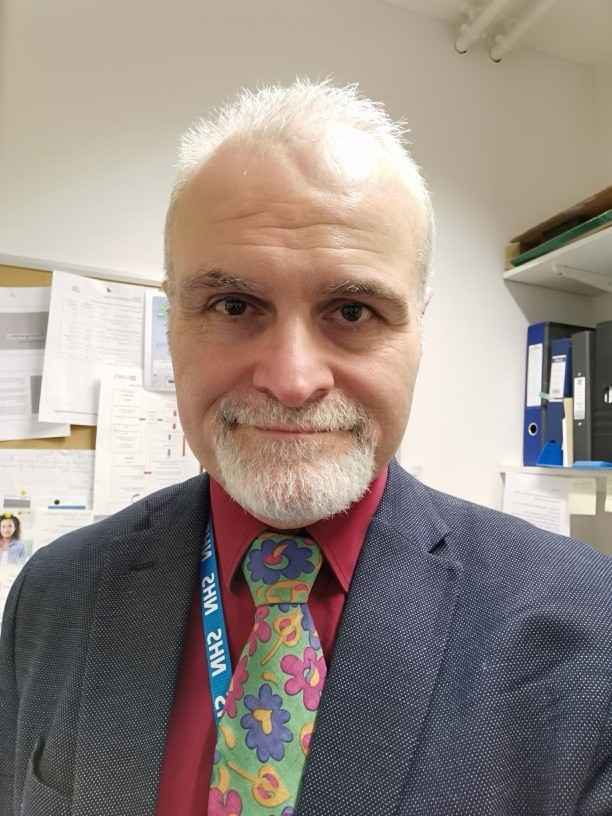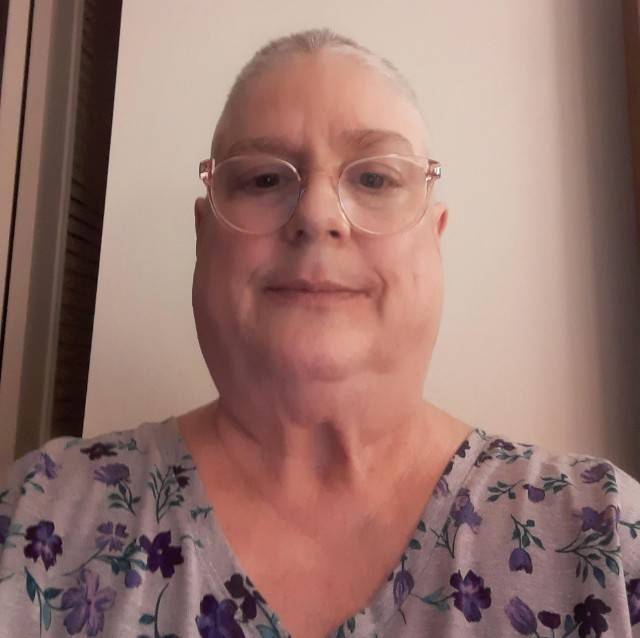AUCTORES
Globalize your Research
Review Article | DOI: https://doi.org/10.31579/2690-4861/181
1Assist. Professor, Chemistry Field, Altoosi University College., Medical Laboratories Techniques, Najaf, Iraq.
2Lecturer, M.Sc, Chemistry Field, Educational Directorate Thi-Qar, Thi-Qar, Iraq.
3Professor, Department of Chemistry, Synthetic Organic Chemistry, Iraq.
*Corresponding Author: Nagham Mahmood Aljamali, 3Professor, Department of Chemistry, Synthetic Organic Chemistry, Iraq.
Citation: Mohammed Husien NS, Hasan Shallal MA and Nagham M. Aljamali, (2024) Review on Evaluation of Portable Nano-Chemical Drugs in The Chemical Treatment of Cancerous Tumors. J. Biomedical Research and Clinical Reviews. 9(1); DOI:10.31579/2690-4861/181
Copyright: © 2023 Nagham Mahmood Aljamali, this is an open-access article distributed under the terms of the Creative Commons Attribution License, which permits unrestricted use, distribution, and reproduction in any medium, provided the original author and source are credited.
Received: 24 February 2024 | Accepted: 02 March 2024 | Published: 11 March 2024
Keywords: cancer; nano; tumor; cancerous cells; treatment; anticancer; drugs; nano delivery
This Review deals with Cancerous tumors and the abnormal growth of some cells and not others were and still are a major cause of many deaths among people in various countries of the world. And the spread of this disease in general and wide has made it a terrifying matter for the countries of the world, especially countries that include in their diet hybrid foods, which prompted scientists to think and search for treatment methods targeting this disease. Among the most common techniques in the treatment of cancer are surgical resections, followed by chemotherapy and radiotherapy or a combination of both together, and it is not hidden from everyone the side effects of these treatments, as the sufficient focus of the treatment does not reach the tumors and thus the occurrence of many complications during treatment, including resistance Medicines that appear in cancer patients and are called multidrug resistance.
Newly developed chemical drugs in nanotechnologies in medical systems to deliver drugs to nanoparticles such as industrial polymers, microcapsules, liposomes and many other systems. The aim was to increase the biological effectiveness of the drug and its accumulation in the target cell, and this is important for anti-cancer drugs, as the drug reaches the appropriate amount to the cancer cell without affecting normal tissues. The drug loaded on the nanoparticles decomposes slowly, and this leads to the delivery of the necessary amount of drug to the affected cell at a controlled rate. In it, all these factors contributed significantly to the clinical acceptance of drug delivery via nanotechnology for the treatment of cancerous tumors. Hence the need to use accurate therapeutic and diagnostic techniques to be a tool in the hands of scientists to fight cancer. This is why nanotechnology was developed, which relies on the use of tiny particles whose sizes range between 1-100 nanometers and which have the ability to bind to any substance such as antibodies, anti-cancer drugs and many others. The size of the nanoparticles is almost imperceptible, as the nanoparticles are very small, ranging between 100-1000 times that of cancer cells, and therefore they can be transported easily through blood vessels, which in turn interact with the cell protein on the cell surface and inside, and thus these particles act as the vehicle that It works to transfer the treatment to the cancer cell accurately, and this is what scientists consider as the new weapon treatment to fight this disease.
Treatment of Cancerous Tumors with Nanoparticles:
The difficulty in treating cancer diseases lies in the high toxicity and lack of chemotherapy or biological treatment, which means that it often kills healthy cells in addition to cancer cells, so we have noticed that patients who take it suffer from debilitating and serious health problems. Therefore, researchers focused on finding mechanisms for drugs that target cancer cells only and leave healthy cells behind, and serious attempts include using specialized immune bodies that target one of the receptors or enzymes important in the spread and growth of cancer, or stimulating immunity, as the system fights cancer cells, and this approach helps to improve The effectiveness of the treatment, especially for some blood and colon cancers, where patients live longer and have specific side effects.
And although it works well, it still needs a lot of development to be successful. It affects other types of cancer. As for the technology we are talking about, it is probably an alternative or synonymous with the use of immune genes, it is the use of nanotechnology to deliver anti-cancer chemical drugs, and the technology summarizes the use of very small spheres "billionths of a meter", these balls have thousands of holes, the size of 20-60 nanometers, so chemicals can be placed in these areas. Nanoparticles are also used in dyes for medical radiology so that they reach and bind to the places required to be accurately diagnosed, which makes the issue of diagnostic imaging more clear. Science believes that nanotechnology will be of great benefit in the treatment of tumors, especially with regard to imaging, due to the small size of nanoparticles, as it can be used in conjunction with magnetic resonance imaging to obtain exceptional images of the locations of the cancerous tumor. Nanoparticles such as quantum dots are much brighter. Of organic dyes, and need one light source for stimulation, in the case of using fluorescent quantum dots, images with higher contrast can be obtained at a lower cost if we compare them using organic dyes that are used as contrast media. The multiple functional groups are attached to the nanoparticle because the nanoparticles have a high ratio of surface area to volume, and therefore they can bind to specific cancer cells, where the nanoparticles accumulate at the tumor site differentially, where work is underway to create multifunctional nanoparticles that have the ability to detect and image the tumor and then treat it. When surgeons operate on cancer patients, they do their best to remove all the diseased cells, because any that are left may regrow into a new tumor or spread to another part of the body. Oncologists usually follow surgery with radiation therapy or chemotherapy, to increase the chances of killing any remaining tumor cells. However, this traditional approach to fighting cancer is not foolproof. In recent years, doctors and scientists have researched nanotechnology to aid in treatment. Groups of gold atoms, known as nanoparticles, could be an effective weapon in fighting cancer cells.
Solid carcinomas usually have permeable blood vessels. As a result, when gold particles are injected into the bloodstream, they seep through openings in blood vessels and collect around a tumor. These cells also swallow nanoparticles to clean the surrounding areas. Once inside cells, these molecules act as Trojan horses. When the researchers shined infrared laser light on the gold particles, it penetrated centimeters of tissue and heated the particles, which in turn killed the cancer cells. That some gold particles are located inside and around normal cells, so healthy tissues can be damaged when the laser targets cancer cells, and the second is that the lasers that are usually used to heat the particles release continuous beams of infrared light, so the heat spreads beyond the cells carcinomas, to normal tissues. In cases where the growth of tumors is in and around vital tissues, such as nerves or arterial walls, any secondary damage to healthy tissues can weaken them or render them in a serious condition.”
The gold particles were provided with antibodies that bind to the receptors on the surface of the squamous cells. They also supplied the gold particles with antibodies (immune proteins) that bind to receptors on the surface of squamous cells. And so the molecules aggregate into clusters of dozens, in and around cancer cells. Instead of firing continuous laser beams, the researchers fired only ultrashort infrared pulses.
Treatment or repair of cellular damage: It can also be used in the treatment of cancer, as nanoparticles reach and concentrate in cancer cells, then they are heated by certain radio frequency waves, which kills cancer cells without harming neighboring normal cells. In the future, it will obviate the need for chemotherapy or radiation, which has many side effects.
Skin applications: the use of some types of nanoparticles in addition to lasers to build and restore skin tissue. Nanotechnology was also used to diagnose some microbial diseases so that nanoparticles stick to antibodies that unite with microbes inside the body, and then signals from nanoparticles can be captured to diagnose infection with this virus. microbe or other. It can also be used to solder blood vessels after they have been cut without the need for the usual sutures. There are also potential applications of nanotechnology in tissue engineering to stimulate proliferation or repair of certain patient tissues, which may replace organ transplantation in the future.
Nanotechnology in Medical Fields:
Nanotechnology has surpassed expectations by its development over its counterparts in technologies, especially in the field of medical care, and dentistry is no exception. There are recent innovations included in the necessary materials in the field of dental diagnosis and treatment. It has been suggested that the use of biotechnology, nanomaterials, and nanorobots in dentistry will increase the likelihood of maintaining oral health as close to ideal as other technologies and the combination of this technology, ethics, and safety to be able to provide high-quality dental care. Conventional chemotherapy kills both cancerous and non-cancerous cells. And the use of nanotechnology in the manufacture of accurate vectors that carry drug doses, and these vectors are designed in a way that the immune cells in the body do not recognize. Where these submarines perform two operations when they reach the tumor area: It closes the capillaries that feed the cancerous tumor., It releases its chemical or radioactive components that only kill cancer cells. This technology was implemented on a group of mice at the American “Memorian-Kettering” cancer center, where the mice with cancer were able to live after 300 days of this treatment, while the mice that did not receive treatment did not live more than 43 days. “nano-rbot” as it is the most exciting possibility in its ability, if realized, to change the world of medicine from its current form, as this “nano-rbot” will then be able to explore the depths of the body, to discover places in order to repair them or attack invading microbes and parasites. Where doctors dream that the realization of nano-rbots one day extends to include: the treatment of bacterial poisoning, respiratory failure, physical injury, in addition to inherited diseases by replacing and replacing defective chromosomes.

Figure 1: Nano- chemical Element as a drug in Treatment of Cancer cells

Figure 2: Selenium-Containing Nanomaterials for Cancer Treatment - ScienceDirect
Injection of Nanoparticles into the sites of Cancer Cells:
The method of injecting nanoparticles loaded with drugs can be concentrated in the kidneys at the site of cancerous tumors and cause them to shrink severely. Nanoparticles were also found to leave the cancer site after unloading the anticancer drug payload and were excreted via urine and feces within four days of injection, with no noticeable side effects. The researchers are now working to improve the precision with which the nanoparticles reach cancer cells by attaching certain genetic signals to these objects, and to test the approach on different types of cancer. The question is: When will this technology be used to treat human cancer? Of course, this would require studying its toxicity in laboratory animals, then testing it in specific cancer patients, and then having the FDA evaluate these results and the feasibility of the technology. The year witnessed many preliminary results of this promising technology, for example, but not limited to, the National Academy of Sciences published an article from the University of Cambridge in the United Kingdom earlier this month, in which it was discovered, by analyzing samples taken from the breast, in laboratory studies of cancer cells Lung and uterus, by loading the drug into nanoparticles made of platinum, cisplatin was less toxic to the kidneys and also showed good efficacy against these different types of cancer.
One of the most important successes in this field was the discovery by scientists at the University of California at Los Angeles in collaboration with the California Institute of Nanotechnology "founded in 2000", using silica nanoparticles "created by Japanese scientists", discovered in 1990, and used for purposes other than Medical, and contains thousands of small holes. The anti-cancer drug, which cannot be administered directly "because of its high toxicity", is loaded with nanoparticles and administered to cancer-containing breast implants of humans with cancer.
Medical Applications as Chemical drug Carriers
The recent development in nanotechnologies has helped to change the medical rules used in preventing, diagnosing and treating diseases, and we are now living in the era of nanomedical technology, where nanotechnology offers, for example, new ways of drug carriers inside the human body (called nanocarriers with sizes up to the nanoscale) be able to target different cells in the body.
Through this technique, the cells of the body can be easily photographed as if we were taking a normal picture of them, as well as those cells can be controlled and shaped in different shapes.
Many types of nanoparticles are used in medical applications as drug carriers or imaging tools inside the body. Currently, various types of manufactured liposome nanoparticles are used as delivery systems for anti-cancer drugs and vaccines. Gold nanoparticles are also used in home test devices to detect pregnancy. In addition, drug delivery systems as well as polymeric or lipid-lipid nanoparticles may be designed to improve the pharmacokinetic and therapeutic properties of drugs. The strength of drug delivery systems is their ability to alter the pharmacokinetics and biodistribution of a drug within organs. Nanoparticles also have a range of unconventional properties that are used to improve drug delivery. While the larger particles are being purified from the body, the cells have the ability to carry these nanoparticles due to their sizes. Drug delivery mechanisms have also been developed, including the ability to get the drug through cell membranes as well as within the cell cytoplasm. Efficiency is important as many diseases depend on processes within the cell and can only be inhibited by drugs that make their way into the cell. The elicited response is one-way for the drug molecules to be used more effectively. Medications are placed inside the body and activated in response to a specific signal. For example, a drug with poor solubility in solution is replaced with a drug delivery system in which both hydrophilic and hydrophobic environments are present, which improves the solubility of the drug. In addition to the fact that the drug may cause tissue damage, with a drug delivery system, a controlled release and diffusion process may eliminate this problem. If the body is cleared of drugs very quickly, this patient may be forced to use higher doses of those drugs, but with the drug purification process based on drug delivery systems, those drug doses that one takes can be reduced
Nanowires are used as nanoscale biosensors due to their high sensitivity and nanosize, where these nanowires are coated with manufactured antibodies so that they stick only to biomolecules (DNA), proteins, or other biological particles present inside the body, and not to other molecules. These proteins or others coated with nanowires will change their conductivity, and thus this nanobiological probe can be used to detect a large number of diseases in their initial stages, by introducing large numbers of nanowires into the body that are coated with different antibodies, representing different probes.
Gold-plated nano vessels are also used to destroy cancer cells, and the length of these nanoveils is about 120 nanometers, which is 170 times smaller than the size of a cancer cell. Red, which heats gold and raises its temperature, which leads to the combustion and death of these cells. This method is characterized by accuracy and locality due to the smallness of the nanospheres in relation to cells and their concentration in diseased cells only, which makes healthy cells away from the risks of side effects.
Bio-nano generators are nano-electrochemical devices that generate electrical power from blood glucose in the body and then use this power to operate other nano-devices implanted inside the human body, such as pacemakers or nano-sugar injection robots.
Among the promising medical applications of nanotechnology is the use of polymer nanofibers to perform prosthetic surgeries for blood vessels. Recently, prosthetic devices made of protein nanofibers have been implanted in the human central nervous system. Polymer nanofibers are also used in the treatment of burns and wounds and are used in the cosmetics industry.
When cadmium selenide nanoparticles (quantum dots) are injected into the body, they selectively collect inside cancer cells. If the target area is exposed to ultraviolet light, the particles light up, which helps in locating malignant cells and removing them accurately.
Nanotechnology is now considering the manufacture of nano-devices with mechanical and electrical properties that replace red blood cells and carry out all their functions, and nanotechnology now offers an alternative to human spare parts with efficiency that is close to the original, as research is now being conducted to replace some organs that perform movement functions, such as bones and muscles. And joints with nanoorganisms do the same job., Rare earth element nanoparticles are used to remove phosphate from the blood of patients with hyperphosphatemia.
Surgical tools have now become a target for development and improvement using nanotechnology, as it was possible to design a surgical scalpel based on a nano-diamond material that cuts with extreme precision through the eyeball. In the near future, it is expected that nanotechnology will provide successful solutions to correct the damage caused in the audio-visual and sensory organs in humans by cultivating accurate nano-devices inside the body. For example, researchers are now working on cultivating a nano-membrane in the retina of the blind to improve his vision.
Surgical Removal of Tumors:
In cases where most of the cancerous tissue could be removed, all animals (100%) survived, thanks to no surviving cancer cells. In cases where the option of partial surgical removal of the tumor is the only one available, the survival rate of animals doubled from what it was before the application of this technique. Colon cancer research has also made great strides, as about 10 years ago it was not possible to identify more than one mutation in these tumors. of mutations, thus determining a more accurate and appropriate treatment for each patient.
Gold Nanoparticles as Treatment
Thousands of years ago, humans intended to use nanoscales without knowing this term. They were used in the manufacture of steel, rubber, and vulcanization, all of which were based on the random properties of the atomic sizes of those materials. It is not possible to specify a specific era or era for the use of this technique. It was mentioned that glass makers in the Middle Ages were using colloidal gold nanoparticles to color the glass, and this is supported by the cup of the Roman king Lycurgus, which has been in the British Museum since the fourth century AD, and which contains particles of gold and silver. Nano-sized, where the color of the cup changes from green to dark red when exposed to a light source. In 1959, the famous American physicist Richard Feynman spoke in a lecture he delivered before the American Physical Society under the title "There is a wide space at the bottom" during which he explained that matter at the infinitesimal levels (now nano), with a few atoms, behaves differently from its state when be of the perceived size, and he also indicated the possibility of finding ways to independently move the atoms and molecules of matter in order to reach the required size. In 1986, the American mathematician Eric Drexler, the actual founder of this science, wrote a book called Genesis Engines, in which he outlined the basic ideas of nanoscience. In 1991, a new physical phenomenon was discovered for the first time, which is the nanotube at the NEC Electronic Industries Company in Japan, by the scientist Sumio Legima, when he was studying the ashes resulting from the electrical discharge process between two electrodes of carbon using a high-efficiency electron microscope, and the result was that he found that carbon particles They take up a tube-like arrangement inside one another
The most optimistic about technology in the modern era did not imagine that an ultra-small unit of measurement known as the “nano” would be invented to the extent that it was described as “one millionth of a millimeter” (one billionth of a meter), and then its entry into multiple fields that known technologies cannot reach. Among them are advanced technological techniques, and they have also become an indispensable part in the treatment of incurable diseases, through which malignant cells are reached and destroyed without affecting healthy cells, which were damaged until recently by traditional treatment methods that do not differentiate between cells and target everything that reaches them. In addition to the serious side effects that patients suffer from, perhaps for months, during treatment periods, doctors using nanotechnology were able to effectively treat incurable diseases by directing treatment to cancer cells with extreme precision and eliminating them, which represented a major medical revolution that developed methods of treatment with this technology. Effective and interesting to many, and progress through this technology has reached the implantation of “nano” sensors in the brain to help paralyzed people walk, in addition to many other successes that have contributed to the eradication of many diseases after accurately diagnosing them and targeting them with modern treatments.
Nanotechnology plays a major role in improving living tissue engineering and cell therapy, which includes the use of live cells or natural or synthetic compounds that are grown inside the living body.
Some researchers are now making experimental attempts to use silicone nano-capsules that stop the body's immune system from recognizing foreign cells, as these capsules block antibodies produced by the body's immune system while a sufficient amount of insulin is released by the nano-capsules into the blood.
Clearly Auctoresonline and particularly Psychology and Mental Health Care Journal is dedicated to improving health care services for individuals and populations. The editorial boards' ability to efficiently recognize and share the global importance of health literacy with a variety of stakeholders. Auctoresonline publishing platform can be used to facilitate of optimal client-based services and should be added to health care professionals' repertoire of evidence-based health care resources.

Journal of Clinical Cardiology and Cardiovascular Intervention The submission and review process was adequate. However I think that the publication total value should have been enlightened in early fases. Thank you for all.

Journal of Women Health Care and Issues By the present mail, I want to say thank to you and tour colleagues for facilitating my published article. Specially thank you for the peer review process, support from the editorial office. I appreciate positively the quality of your journal.
Journal of Clinical Research and Reports I would be very delighted to submit my testimonial regarding the reviewer board and the editorial office. The reviewer board were accurate and helpful regarding any modifications for my manuscript. And the editorial office were very helpful and supportive in contacting and monitoring with any update and offering help. It was my pleasure to contribute with your promising Journal and I am looking forward for more collaboration.

We would like to thank the Journal of Thoracic Disease and Cardiothoracic Surgery because of the services they provided us for our articles. The peer-review process was done in a very excellent time manner, and the opinions of the reviewers helped us to improve our manuscript further. The editorial office had an outstanding correspondence with us and guided us in many ways. During a hard time of the pandemic that is affecting every one of us tremendously, the editorial office helped us make everything easier for publishing scientific work. Hope for a more scientific relationship with your Journal.

The peer-review process which consisted high quality queries on the paper. I did answer six reviewers’ questions and comments before the paper was accepted. The support from the editorial office is excellent.

Journal of Neuroscience and Neurological Surgery. I had the experience of publishing a research article recently. The whole process was simple from submission to publication. The reviewers made specific and valuable recommendations and corrections that improved the quality of my publication. I strongly recommend this Journal.

Dr. Katarzyna Byczkowska My testimonial covering: "The peer review process is quick and effective. The support from the editorial office is very professional and friendly. Quality of the Clinical Cardiology and Cardiovascular Interventions is scientific and publishes ground-breaking research on cardiology that is useful for other professionals in the field.

Thank you most sincerely, with regard to the support you have given in relation to the reviewing process and the processing of my article entitled "Large Cell Neuroendocrine Carcinoma of The Prostate Gland: A Review and Update" for publication in your esteemed Journal, Journal of Cancer Research and Cellular Therapeutics". The editorial team has been very supportive.

Testimony of Journal of Clinical Otorhinolaryngology: work with your Reviews has been a educational and constructive experience. The editorial office were very helpful and supportive. It was a pleasure to contribute to your Journal.

Dr. Bernard Terkimbi Utoo, I am happy to publish my scientific work in Journal of Women Health Care and Issues (JWHCI). The manuscript submission was seamless and peer review process was top notch. I was amazed that 4 reviewers worked on the manuscript which made it a highly technical, standard and excellent quality paper. I appreciate the format and consideration for the APC as well as the speed of publication. It is my pleasure to continue with this scientific relationship with the esteem JWHCI.

This is an acknowledgment for peer reviewers, editorial board of Journal of Clinical Research and Reports. They show a lot of consideration for us as publishers for our research article “Evaluation of the different factors associated with side effects of COVID-19 vaccination on medical students, Mutah university, Al-Karak, Jordan”, in a very professional and easy way. This journal is one of outstanding medical journal.
Dear Hao Jiang, to Journal of Nutrition and Food Processing We greatly appreciate the efficient, professional and rapid processing of our paper by your team. If there is anything else we should do, please do not hesitate to let us know. On behalf of my co-authors, we would like to express our great appreciation to editor and reviewers.

As an author who has recently published in the journal "Brain and Neurological Disorders". I am delighted to provide a testimonial on the peer review process, editorial office support, and the overall quality of the journal. The peer review process at Brain and Neurological Disorders is rigorous and meticulous, ensuring that only high-quality, evidence-based research is published. The reviewers are experts in their fields, and their comments and suggestions were constructive and helped improve the quality of my manuscript. The review process was timely and efficient, with clear communication from the editorial office at each stage. The support from the editorial office was exceptional throughout the entire process. The editorial staff was responsive, professional, and always willing to help. They provided valuable guidance on formatting, structure, and ethical considerations, making the submission process seamless. Moreover, they kept me informed about the status of my manuscript and provided timely updates, which made the process less stressful. The journal Brain and Neurological Disorders is of the highest quality, with a strong focus on publishing cutting-edge research in the field of neurology. The articles published in this journal are well-researched, rigorously peer-reviewed, and written by experts in the field. The journal maintains high standards, ensuring that readers are provided with the most up-to-date and reliable information on brain and neurological disorders. In conclusion, I had a wonderful experience publishing in Brain and Neurological Disorders. The peer review process was thorough, the editorial office provided exceptional support, and the journal's quality is second to none. I would highly recommend this journal to any researcher working in the field of neurology and brain disorders.

Dear Agrippa Hilda, Journal of Neuroscience and Neurological Surgery, Editorial Coordinator, I trust this message finds you well. I want to extend my appreciation for considering my article for publication in your esteemed journal. I am pleased to provide a testimonial regarding the peer review process and the support received from your editorial office. The peer review process for my paper was carried out in a highly professional and thorough manner. The feedback and comments provided by the authors were constructive and very useful in improving the quality of the manuscript. This rigorous assessment process undoubtedly contributes to the high standards maintained by your journal.

International Journal of Clinical Case Reports and Reviews. I strongly recommend to consider submitting your work to this high-quality journal. The support and availability of the Editorial staff is outstanding and the review process was both efficient and rigorous.

Thank you very much for publishing my Research Article titled “Comparing Treatment Outcome Of Allergic Rhinitis Patients After Using Fluticasone Nasal Spray And Nasal Douching" in the Journal of Clinical Otorhinolaryngology. As Medical Professionals we are immensely benefited from study of various informative Articles and Papers published in this high quality Journal. I look forward to enriching my knowledge by regular study of the Journal and contribute my future work in the field of ENT through the Journal for use by the medical fraternity. The support from the Editorial office was excellent and very prompt. I also welcome the comments received from the readers of my Research Article.

Dear Erica Kelsey, Editorial Coordinator of Cancer Research and Cellular Therapeutics Our team is very satisfied with the processing of our paper by your journal. That was fast, efficient, rigorous, but without unnecessary complications. We appreciated the very short time between the submission of the paper and its publication on line on your site.

I am very glad to say that the peer review process is very successful and fast and support from the Editorial Office. Therefore, I would like to continue our scientific relationship for a long time. And I especially thank you for your kindly attention towards my article. Have a good day!

"We recently published an article entitled “Influence of beta-Cyclodextrins upon the Degradation of Carbofuran Derivatives under Alkaline Conditions" in the Journal of “Pesticides and Biofertilizers” to show that the cyclodextrins protect the carbamates increasing their half-life time in the presence of basic conditions This will be very helpful to understand carbofuran behaviour in the analytical, agro-environmental and food areas. We greatly appreciated the interaction with the editor and the editorial team; we were particularly well accompanied during the course of the revision process, since all various steps towards publication were short and without delay".

I would like to express my gratitude towards you process of article review and submission. I found this to be very fair and expedient. Your follow up has been excellent. I have many publications in national and international journal and your process has been one of the best so far. Keep up the great work.

We are grateful for this opportunity to provide a glowing recommendation to the Journal of Psychiatry and Psychotherapy. We found that the editorial team were very supportive, helpful, kept us abreast of timelines and over all very professional in nature. The peer review process was rigorous, efficient and constructive that really enhanced our article submission. The experience with this journal remains one of our best ever and we look forward to providing future submissions in the near future.

I am very pleased to serve as EBM of the journal, I hope many years of my experience in stem cells can help the journal from one way or another. As we know, stem cells hold great potential for regenerative medicine, which are mostly used to promote the repair response of diseased, dysfunctional or injured tissue using stem cells or their derivatives. I think Stem Cell Research and Therapeutics International is a great platform to publish and share the understanding towards the biology and translational or clinical application of stem cells.

I would like to give my testimony in the support I have got by the peer review process and to support the editorial office where they were of asset to support young author like me to be encouraged to publish their work in your respected journal and globalize and share knowledge across the globe. I really give my great gratitude to your journal and the peer review including the editorial office.

I am delighted to publish our manuscript entitled "A Perspective on Cocaine Induced Stroke - Its Mechanisms and Management" in the Journal of Neuroscience and Neurological Surgery. The peer review process, support from the editorial office, and quality of the journal are excellent. The manuscripts published are of high quality and of excellent scientific value. I recommend this journal very much to colleagues.

Dr.Tania Muñoz, My experience as researcher and author of a review article in The Journal Clinical Cardiology and Interventions has been very enriching and stimulating. The editorial team is excellent, performs its work with absolute responsibility and delivery. They are proactive, dynamic and receptive to all proposals. Supporting at all times the vast universe of authors who choose them as an option for publication. The team of review specialists, members of the editorial board, are brilliant professionals, with remarkable performance in medical research and scientific methodology. Together they form a frontline team that consolidates the JCCI as a magnificent option for the publication and review of high-level medical articles and broad collective interest. I am honored to be able to share my review article and open to receive all your comments.

“The peer review process of JPMHC is quick and effective. Authors are benefited by good and professional reviewers with huge experience in the field of psychology and mental health. The support from the editorial office is very professional. People to contact to are friendly and happy to help and assist any query authors might have. Quality of the Journal is scientific and publishes ground-breaking research on mental health that is useful for other professionals in the field”.

Dear editorial department: On behalf of our team, I hereby certify the reliability and superiority of the International Journal of Clinical Case Reports and Reviews in the peer review process, editorial support, and journal quality. Firstly, the peer review process of the International Journal of Clinical Case Reports and Reviews is rigorous, fair, transparent, fast, and of high quality. The editorial department invites experts from relevant fields as anonymous reviewers to review all submitted manuscripts. These experts have rich academic backgrounds and experience, and can accurately evaluate the academic quality, originality, and suitability of manuscripts. The editorial department is committed to ensuring the rigor of the peer review process, while also making every effort to ensure a fast review cycle to meet the needs of authors and the academic community. Secondly, the editorial team of the International Journal of Clinical Case Reports and Reviews is composed of a group of senior scholars and professionals with rich experience and professional knowledge in related fields. The editorial department is committed to assisting authors in improving their manuscripts, ensuring their academic accuracy, clarity, and completeness. Editors actively collaborate with authors, providing useful suggestions and feedback to promote the improvement and development of the manuscript. We believe that the support of the editorial department is one of the key factors in ensuring the quality of the journal. Finally, the International Journal of Clinical Case Reports and Reviews is renowned for its high- quality articles and strict academic standards. The editorial department is committed to publishing innovative and academically valuable research results to promote the development and progress of related fields. The International Journal of Clinical Case Reports and Reviews is reasonably priced and ensures excellent service and quality ratio, allowing authors to obtain high-level academic publishing opportunities in an affordable manner. I hereby solemnly declare that the International Journal of Clinical Case Reports and Reviews has a high level of credibility and superiority in terms of peer review process, editorial support, reasonable fees, and journal quality. Sincerely, Rui Tao.

Clinical Cardiology and Cardiovascular Interventions I testity the covering of the peer review process, support from the editorial office, and quality of the journal.

Clinical Cardiology and Cardiovascular Interventions, we deeply appreciate the interest shown in our work and its publication. It has been a true pleasure to collaborate with you. The peer review process, as well as the support provided by the editorial office, have been exceptional, and the quality of the journal is very high, which was a determining factor in our decision to publish with you.
The peer reviewers process is quick and effective, the supports from editorial office is excellent, the quality of journal is high. I would like to collabroate with Internatioanl journal of Clinical Case Reports and Reviews journal clinically in the future time.

Clinical Cardiology and Cardiovascular Interventions, I would like to express my sincerest gratitude for the trust placed in our team for the publication in your journal. It has been a true pleasure to collaborate with you on this project. I am pleased to inform you that both the peer review process and the attention from the editorial coordination have been excellent. Your team has worked with dedication and professionalism to ensure that your publication meets the highest standards of quality. We are confident that this collaboration will result in mutual success, and we are eager to see the fruits of this shared effort.

Dear Dr. Jessica Magne, Editorial Coordinator 0f Clinical Cardiology and Cardiovascular Interventions, I hope this message finds you well. I want to express my utmost gratitude for your excellent work and for the dedication and speed in the publication process of my article titled "Navigating Innovation: Qualitative Insights on Using Technology for Health Education in Acute Coronary Syndrome Patients." I am very satisfied with the peer review process, the support from the editorial office, and the quality of the journal. I hope we can maintain our scientific relationship in the long term.
Dear Monica Gissare, - Editorial Coordinator of Nutrition and Food Processing. ¨My testimony with you is truly professional, with a positive response regarding the follow-up of the article and its review, you took into account my qualities and the importance of the topic¨.

Dear Dr. Jessica Magne, Editorial Coordinator 0f Clinical Cardiology and Cardiovascular Interventions, The review process for the article “The Handling of Anti-aggregants and Anticoagulants in the Oncologic Heart Patient Submitted to Surgery” was extremely rigorous and detailed. From the initial submission to the final acceptance, the editorial team at the “Journal of Clinical Cardiology and Cardiovascular Interventions” demonstrated a high level of professionalism and dedication. The reviewers provided constructive and detailed feedback, which was essential for improving the quality of our work. Communication was always clear and efficient, ensuring that all our questions were promptly addressed. The quality of the “Journal of Clinical Cardiology and Cardiovascular Interventions” is undeniable. It is a peer-reviewed, open-access publication dedicated exclusively to disseminating high-quality research in the field of clinical cardiology and cardiovascular interventions. The journal's impact factor is currently under evaluation, and it is indexed in reputable databases, which further reinforces its credibility and relevance in the scientific field. I highly recommend this journal to researchers looking for a reputable platform to publish their studies.

Dear Editorial Coordinator of the Journal of Nutrition and Food Processing! "I would like to thank the Journal of Nutrition and Food Processing for including and publishing my article. The peer review process was very quick, movement and precise. The Editorial Board has done an extremely conscientious job with much help, valuable comments and advices. I find the journal very valuable from a professional point of view, thank you very much for allowing me to be part of it and I would like to participate in the future!”

Dealing with The Journal of Neurology and Neurological Surgery was very smooth and comprehensive. The office staff took time to address my needs and the response from editors and the office was prompt and fair. I certainly hope to publish with this journal again.Their professionalism is apparent and more than satisfactory. Susan Weiner

My Testimonial Covering as fellowing: Lin-Show Chin. The peer reviewers process is quick and effective, the supports from editorial office is excellent, the quality of journal is high. I would like to collabroate with Internatioanl journal of Clinical Case Reports and Reviews.

My experience publishing in Psychology and Mental Health Care was exceptional. The peer review process was rigorous and constructive, with reviewers providing valuable insights that helped enhance the quality of our work. The editorial team was highly supportive and responsive, making the submission process smooth and efficient. The journal's commitment to high standards and academic rigor makes it a respected platform for quality research. I am grateful for the opportunity to publish in such a reputable journal.
My experience publishing in International Journal of Clinical Case Reports and Reviews was exceptional. I Come forth to Provide a Testimonial Covering the Peer Review Process and the editorial office for the Professional and Impartial Evaluation of the Manuscript.

I would like to offer my testimony in the support. I have received through the peer review process and support the editorial office where they are to support young authors like me, encourage them to publish their work in your esteemed journals, and globalize and share knowledge globally. I really appreciate your journal, peer review, and editorial office.
Dear Agrippa Hilda- Editorial Coordinator of Journal of Neuroscience and Neurological Surgery, "The peer review process was very quick and of high quality, which can also be seen in the articles in the journal. The collaboration with the editorial office was very good."

I would like to express my sincere gratitude for the support and efficiency provided by the editorial office throughout the publication process of my article, “Delayed Vulvar Metastases from Rectal Carcinoma: A Case Report.” I greatly appreciate the assistance and guidance I received from your team, which made the entire process smooth and efficient. The peer review process was thorough and constructive, contributing to the overall quality of the final article. I am very grateful for the high level of professionalism and commitment shown by the editorial staff, and I look forward to maintaining a long-term collaboration with the International Journal of Clinical Case Reports and Reviews.
To Dear Erin Aust, I would like to express my heartfelt appreciation for the opportunity to have my work published in this esteemed journal. The entire publication process was smooth and well-organized, and I am extremely satisfied with the final result. The Editorial Team demonstrated the utmost professionalism, providing prompt and insightful feedback throughout the review process. Their clear communication and constructive suggestions were invaluable in enhancing my manuscript, and their meticulous attention to detail and dedication to quality are truly commendable. Additionally, the support from the Editorial Office was exceptional. From the initial submission to the final publication, I was guided through every step of the process with great care and professionalism. The team's responsiveness and assistance made the entire experience both easy and stress-free. I am also deeply impressed by the quality and reputation of the journal. It is an honor to have my research featured in such a respected publication, and I am confident that it will make a meaningful contribution to the field.

"I am grateful for the opportunity of contributing to [International Journal of Clinical Case Reports and Reviews] and for the rigorous review process that enhances the quality of research published in your esteemed journal. I sincerely appreciate the time and effort of your team who have dedicatedly helped me in improvising changes and modifying my manuscript. The insightful comments and constructive feedback provided have been invaluable in refining and strengthening my work".

I thank the ‘Journal of Clinical Research and Reports’ for accepting this article for publication. This is a rigorously peer reviewed journal which is on all major global scientific data bases. I note the review process was prompt, thorough and professionally critical. It gave us an insight into a number of important scientific/statistical issues. The review prompted us to review the relevant literature again and look at the limitations of the study. The peer reviewers were open, clear in the instructions and the editorial team was very prompt in their communication. This journal certainly publishes quality research articles. I would recommend the journal for any future publications.

Dear Jessica Magne, with gratitude for the joint work. Fast process of receiving and processing the submitted scientific materials in “Clinical Cardiology and Cardiovascular Interventions”. High level of competence of the editors with clear and correct recommendations and ideas for enriching the article.

We found the peer review process quick and positive in its input. The support from the editorial officer has been very agile, always with the intention of improving the article and taking into account our subsequent corrections.

My article, titled 'No Way Out of the Smartphone Epidemic Without Considering the Insights of Brain Research,' has been republished in the International Journal of Clinical Case Reports and Reviews. The review process was seamless and professional, with the editors being both friendly and supportive. I am deeply grateful for their efforts.
To Dear Erin Aust – Editorial Coordinator of Journal of General Medicine and Clinical Practice! I declare that I am absolutely satisfied with your work carried out with great competence in following the manuscript during the various stages from its receipt, during the revision process to the final acceptance for publication. Thank Prof. Elvira Farina

Dear Jessica, and the super professional team of the ‘Clinical Cardiology and Cardiovascular Interventions’ I am sincerely grateful to the coordinated work of the journal team for the no problem with the submission of my manuscript: “Cardiometabolic Disorders in A Pregnant Woman with Severe Preeclampsia on the Background of Morbid Obesity (Case Report).” The review process by 5 experts was fast, and the comments were professional, which made it more specific and academic, and the process of publication and presentation of the article was excellent. I recommend that my colleagues publish articles in this journal, and I am interested in further scientific cooperation. Sincerely and best wishes, Dr. Oleg Golyanovskiy.

Dear Ashley Rosa, Editorial Coordinator of the journal - Psychology and Mental Health Care. " The process of obtaining publication of my article in the Psychology and Mental Health Journal was positive in all areas. The peer review process resulted in a number of valuable comments, the editorial process was collaborative and timely, and the quality of this journal has been quickly noticed, resulting in alternative journals contacting me to publish with them." Warm regards, Susan Anne Smith, PhD. Australian Breastfeeding Association.

Dear Jessica Magne, Editorial Coordinator, Clinical Cardiology and Cardiovascular Interventions, Auctores Publishing LLC. I appreciate the journal (JCCI) editorial office support, the entire team leads were always ready to help, not only on technical front but also on thorough process. Also, I should thank dear reviewers’ attention to detail and creative approach to teach me and bring new insights by their comments. Surely, more discussions and introduction of other hemodynamic devices would provide better prevention and management of shock states. Your efforts and dedication in presenting educational materials in this journal are commendable. Best wishes from, Farahnaz Fallahian.
Dear Maria Emerson, Editorial Coordinator, International Journal of Clinical Case Reports and Reviews, Auctores Publishing LLC. I am delighted to have published our manuscript, "Acute Colonic Pseudo-Obstruction (ACPO): A rare but serious complication following caesarean section." I want to thank the editorial team, especially Maria Emerson, for their prompt review of the manuscript, quick responses to queries, and overall support. Yours sincerely Dr. Victor Olagundoye.

Dear Ashley Rosa, Editorial Coordinator, International Journal of Clinical Case Reports and Reviews. Many thanks for publishing this manuscript after I lost confidence the editors were most helpful, more than other journals Best wishes from, Susan Anne Smith, PhD. Australian Breastfeeding Association.

Dear Agrippa Hilda, Editorial Coordinator, Journal of Neuroscience and Neurological Surgery. The entire process including article submission, review, revision, and publication was extremely easy. The journal editor was prompt and helpful, and the reviewers contributed to the quality of the paper. Thank you so much! Eric Nussbaum, MD
Dr Hala Al Shaikh This is to acknowledge that the peer review process for the article ’ A Novel Gnrh1 Gene Mutation in Four Omani Male Siblings, Presentation and Management ’ sent to the International Journal of Clinical Case Reports and Reviews was quick and smooth. The editorial office was prompt with easy communication.

Dear Erin Aust, Editorial Coordinator, Journal of General Medicine and Clinical Practice. We are pleased to share our experience with the “Journal of General Medicine and Clinical Practice”, following the successful publication of our article. The peer review process was thorough and constructive, helping to improve the clarity and quality of the manuscript. We are especially thankful to Ms. Erin Aust, the Editorial Coordinator, for her prompt communication and continuous support throughout the process. Her professionalism ensured a smooth and efficient publication experience. The journal upholds high editorial standards, and we highly recommend it to fellow researchers seeking a credible platform for their work. Best wishes By, Dr. Rakhi Mishra.

Dear Jessica Magne, Editorial Coordinator, Clinical Cardiology and Cardiovascular Interventions, Auctores Publishing LLC. The peer review process of the journal of Clinical Cardiology and Cardiovascular Interventions was excellent and fast, as was the support of the editorial office and the quality of the journal. Kind regards Walter F. Riesen Prof. Dr. Dr. h.c. Walter F. Riesen.

Dear Ashley Rosa, Editorial Coordinator, International Journal of Clinical Case Reports and Reviews, Auctores Publishing LLC. Thank you for publishing our article, Exploring Clozapine's Efficacy in Managing Aggression: A Multiple Single-Case Study in Forensic Psychiatry in the international journal of clinical case reports and reviews. We found the peer review process very professional and efficient. The comments were constructive, and the whole process was efficient. On behalf of the co-authors, I would like to thank you for publishing this article. With regards, Dr. Jelle R. Lettinga.

Dear Clarissa Eric, Editorial Coordinator, Journal of Clinical Case Reports and Studies, I would like to express my deep admiration for the exceptional professionalism demonstrated by your journal. I am thoroughly impressed by the speed of the editorial process, the substantive and insightful reviews, and the meticulous preparation of the manuscript for publication. Additionally, I greatly appreciate the courteous and immediate responses from your editorial office to all my inquiries. Best Regards, Dariusz Ziora

Dear Chrystine Mejia, Editorial Coordinator, Journal of Neurodegeneration and Neurorehabilitation, Auctores Publishing LLC, We would like to thank the editorial team for the smooth and high-quality communication leading up to the publication of our article in the Journal of Neurodegeneration and Neurorehabilitation. The reviewers have extensive knowledge in the field, and their relevant questions helped to add value to our publication. Kind regards, Dr. Ravi Shrivastava.

Dear Clarissa Eric, Editorial Coordinator, Journal of Clinical Case Reports and Studies, Auctores Publishing LLC, USA Office: +1-(302)-520-2644. I would like to express my sincere appreciation for the efficient and professional handling of my case report by the ‘Journal of Clinical Case Reports and Studies’. The peer review process was not only fast but also highly constructive—the reviewers’ comments were clear, relevant, and greatly helped me improve the quality and clarity of my manuscript. I also received excellent support from the editorial office throughout the process. Communication was smooth and timely, and I felt well guided at every stage, from submission to publication. The overall quality and rigor of the journal are truly commendable. I am pleased to have published my work with Journal of Clinical Case Reports and Studies, and I look forward to future opportunities for collaboration. Sincerely, Aline Tollet, UCLouvain.

Dear Ms. Mayra Duenas, Editorial Coordinator, International Journal of Clinical Case Reports and Reviews. “The International Journal of Clinical Case Reports and Reviews represented the “ideal house” to share with the research community a first experience with the use of the Simeox device for speech rehabilitation. High scientific reputation and attractive website communication were first determinants for the selection of this Journal, and the following submission process exceeded expectations: fast but highly professional peer review, great support by the editorial office, elegant graphic layout. Exactly what a dynamic research team - also composed by allied professionals - needs!" From, Chiara Beccaluva, PT - Italy.

Dear Maria Emerson, Editorial Coordinator, we have deeply appreciated the professionalism demonstrated by the International Journal of Clinical Case Reports and Reviews. The reviewers have extensive knowledge of our field and have been very efficient and fast in supporting the process. I am really looking forward to further collaboration. Thanks. Best regards, Dr. Claudio Ligresti